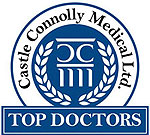Common Questions
What is blepharoplasty?
Pronounced blef-ah-ro-plas-te, this is a type of plastic surgery that is performed on the upper or lower eyelids to remove wrinkles and bulges from around the eyes, such as sagging eyelids or under eye bags.
Why is blepharoplasty done?
Blepharoplasty is done to improve visual function and/or cosmetic appearance.
An excessive number of wrinkled skin folds above the eyes can produce a sagging, tired look that detracts from one’s appearance. In this situation, blepharoplasty may be considered for cosmetic reasons, even though vision is not affected.
In the upper eyelid, the CO2 laser is used to remove the excess amount of skin and fat along the natural eyelid crease line. In the lower eyelid portion of the eye surgery, the lower eyelid incision is made on the inside of the eyelid, instead of beneath the lash line on the outside of the eye as in a traditional blepharoplasty. The Kellis Laser Lift® lets the oculoplastic surgeon to remove excess fat without an external incision.
What is an oculoplastic surgeon?
An oculoplastic surgeon is an ophthalmologist who has completed four years of pre-medical studies, four years of medical school, one year of internship in general surgery and general medicine, and a three-year residency in ophthalmology in order to become board certified. A one to two year fellowship in oculoplastic surgery follows, where the complicated structures within and around the eye, eyelids, brows, and orbit (the bony socket) are studied and surgical techniques are mastered.
Why choose an oculoplastic surgeon over a general plastic surgeon?
Because blepharoplasty can affect the function and lubrication of the eye, a consultation with an oculoplastic surgeon who is a board certified ophthalmologist, is important. An oculoplastic surgeon is the only surgeon trained specifically to treat the eye. He or she is uniquely qualified to help you decide whether to consider this surgery.
What are the benefits of eyelid surgery using the Kellis Laser Lift® and CO2 laser?
The Kellis Laser Lift is different from traditional blepharoplasty because the hidden incision on the upper lid the only external incision in the surgery. No external incision on the lower lid means no visible scarring on the lower lid. As a board certified ophthalmologist and oculoplastic surgeon, Dr. Kellis’ unique understanding of the eye and its structures allowed him to develop this subtle technique.
The CO2 laser compliments Dr. Kellis’ technique. The laser is gentle on the skin, reducing bruising and bleeding from incisions. Depending on the patient’s particular condition, the CO2 laser can then be used to stimulate collagen production and smooth out all fine lines and wrinkles on the lower eyelid. The exclusive method and the effectiveness of the laser mean optimal results for your eyes.
What can I expect?
As the first step toward eyelid surgery, the doctor determines how much skin and fat must be removed to eliminate wrinkles and bulges around the eye. After, upper and lower incision lines are marked along the natural skin creases. Incision lines are generally extended into the “crow’s feet” at the outer edge of the eye, so that once healed, the incision lines are less visible. The incisions are made with a laser, and excess skin and fat are removed so that a taut, natural lid crease can be reformed by closing the incisions.
How long is the surgery?
Actual surgery time will vary, but generally you can expect to be at the surgical center for three hours, depending on the type of surgery planned for you.
What is the recovery like?
For more information on the healing process, see Patient Information
How long is healing time?/When will I see “final results”?
Full healing time is roughly six (6) months, but you will see results much sooner than that. You may notice drastic improvements in as little as three weeks. But remember, even though you’ll look great, your body is still healing and needs to be treated with care. Dr. Kellis’ staff will be there to support you throughout the entire surgical and healing process. They’ll provide you with information on how best to care for your eyes, before and after your surgery.










